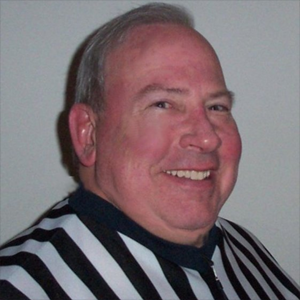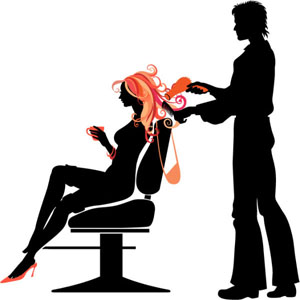
Rndballref
20 Years Experience
Chicago, IL
Male, 60
For twenty years I officiated high school, AAU and park district basketball games, retiring recently. For a few officiating is the focus of their occupation, while for most working as an umpire or basketball referee is an avocation. I started ref'ing to earn beer money during college, but it became a great way to stay connected to the best sports game in the universe. As a spinoff, I wrote a sports-thriller novel loosely based on my referee experiences titled, Advantage Disadvantage
Indirectly referees and the home school have the authority. In NFHS rules there is a function called home management. It is usually the athletic director, or a representative of the AD. The rule book states that in the absence of a designated home management person, the home team head coach will assume that function.
Directly from the rule book: The officials shall penalize unsporting behavior by player, coach, substitute, team attendant or FOLLOWER.
Further the book states: ... the officials may rule fouls on either team if its supporters act in a way to interfere with the proper conduct of the game.
It also cautions the officials to be careful applying penalties so as not to unfairly penalize a team.
When I officiated, I never engaged in an expulsion dialog with a fan. I simply went to home management (the AD) and said something like, "the guy in the third row with the blue shirt has to go. Home management always complied with my request and escorted the unruly fan out (or used an on site police officer to be the escort) and the AD often apologized about a overzealous home team fan.
see the answer below. In summary, Home Management can eject anybody. Usually the AD works closely with the coach so in practical terms, the answer is yes.
It is confusing because there are different philosophies of how to call these situations. The rules clearly state that a foul intentionally committed should be called intentional and administered with 2 free throws and the ball at point of interruption.
Most referees will avoid calling intentional fouls if the foul is not severe, the player attempted to go after the ball, and/or did not grab the player. Here is the dilemma...if you wait to make sure a foul is a foul when the whole gym is expecting one then it looks bad not to call an intentional and play can get rough. If you have a quick whistle on first contact it looks like you are aiding the losing team in their attempt to foul their way back into the game.
I wish I had a better answer for you. This is one of the toughest judgement calls in the game.
Well, the referee is considered to be part of the floor where he is standing. If he is out of bounds and the ball touches him, it is out of bounds. If he is in bounds and the ball touches him, play on.
REALTOR®
 What's the best way to know if housing prices are going to rise or fall?
What's the best way to know if housing prices are going to rise or fall?
Hairstylist and Makeup Artist
 What's the grossest hair ailment you ever saw?
What's the grossest hair ailment you ever saw?
CPR Trainer
 Are men better at CPR than women because they're generally stronger?
Are men better at CPR than women because they're generally stronger?
ok.
In the violations section of the rule book regarding free throws, it states that the free throw shooter shall have neither foot beyond the vertical plane of the edge of the free throw line which is further from the basket.
This restriction ends when the ball hits the ring, backboard or until the free throw ends.
So no, a player cannot soar through the air leaping from the semi-circle to dunk a ball - he would have to cross the vertical plane of the free throw line.
No, by rule a coach has only 2 places he/she can be: 1) standing (or squating) in a 14 foot area out of bounds, in front of his/her bench known as the "coach's box" in states that have adopted this optional provision, or 2) sitting on his/her bench.
In practice, unless a coach is over-bearing to the officials or is gaining advantage (for example standing near the endline and directing players) most referees are not going to focus on a coach outside the box. The penalty is a direct technical foul and most refs do well to ask or warn the coach before calling a T.
If a coach is called for any direct technical foul, he/she is "seatbelted" to the bench and loses the ability to stand in the coach's box for the remainder of the game.
-OR-
 Login with Facebook
Login with Facebook (max 20 characters - letters, numbers, and underscores only. Note that your username is private, and you have the option to choose an alias when asking questions or hosting a Q&A.)
(A valid e-mail address is required. Your e-mail will not be shared with anyone.)
(min 5 characters)
By checking this box, you acknowledge that you have read and agree to Jobstr.com’s Terms and Privacy Policy.
-OR-
 Register with Facebook
Register with Facebook(Don't worry: you'll be able to choose an alias when asking questions or hosting a Q&A.)